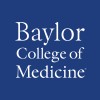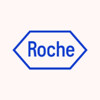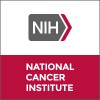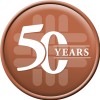
Activated T-Cells Expressing 2nd or 3rd Generation CD19-Specific CAR, Advanced B-Cell NHL, ALL,...
Non-Hodgkin LymphomaChronic Lymphocytic Leukemia1 moreSubjects on this study have a type of lymph gland cancer called Non-Hodgkin Lymphoma, acute lymphocytic leukemia, or chronic Lymphocytic Leukemia (these diseases will be referred to as "lymphoma" or "leukemia"). The lymphoma or leukemia has come back or has not gone away after treatment. The body has different ways of fighting infection and disease. No one way seems perfect for fighting cancers. This research study combines two different ways of fighting disease, antibodies and T cells, hoping that they will work together. Both antibodies and T cells have been used to treat patients with cancer. They have shown promise, but have not been strong enough to cure most patients. T cells can kill tumor cells but normally there are not enough of them to kill all the tumor cells. Some researchers have taken T cells from a person's blood, grown more of them in the laboratory and then given them back to the person. The antibody used in this study is called anti-CD19. It first came from mice that have developed immunity to human lymphoma. This antibody sticks to lymphoma cells because of a substance on the outside of these cells called CD19. CD19 antibodies have been used to treat people with lymphoma and leukemia. For this study, anti-CD19 has been changed so that instead of floating free in the blood it is now joined to the T cells. When an antibody is joined to a T cell in this way it is called a chimeric receptor. In the laboratory, the investigators found that T cells work better if they also add proteins that stimulate T cells, such as one called CD28. Adding the CD28 makes the cells last longer in the body but not long enough for them to be able to kill the lymphoma cells. The investigators believe that if they add an extra stimulating protein, called CD137, the cells will have a better chance of killing the lymphoma cells. The investigators are going to see if this is true by putting the CD19 chimeric receptor with CD28 alone into half of the cells and the CD19 chimeric receptor with CD28 and CD137 into the other half of the cells. These CD19 chimeric receptor T cells with CD28 and with or without CD137 are investigational products not approved by the FDA. The purpose of this study is to find the biggest dose of chimeric T cells that is safe, to see how long the T cell with each sort of chimeric receptor lasts, to learn what the side effects are and to see whether this therapy might help people with lymphoma or leukemia.

Rapamycin Treatment for Activated Phosphoinositide 3-Kinase δ Syndrome
Activated PI3K-delta SyndromeImmunodeficiency PrimaryThe purpose of this proposed research is to evaluate the efficacy and safety of the rapamycin therapy in patients with activated phosphoinositide 3-kinase δ syndrome (APDS).

Personalized Neoantigen Cancer Vaccine + Pembrolizumab After Rituximab for Follicular Lymphoma
Follicular LymphomaThis research study is studying a novel type of FL vaccine as a possible treatment for follicular lymphoma (FL). The agents involved in this study are: Rituximab Personalized NeoAntigen vaccine Poly-ICLC Pembrolizumab

Phase I-II Study in CD30 Positive Diffuse Large B-cell Lymphoma Patients Refractory to First Line...
DLBCLPatients with CD30 positive DLBCL, primary refractory or in first relapse after R-CHOP or R-CHOP-like therapy will receive brentuximab vedotin in combination with R-DHAP, followed in responsive patients by high dose chemotherapy and ASCT.

Ultra Low Dose Radiation Therapy in Treating Patients With Mycosis Fungoides
Localized Skin LesionMycosis FungoidesThis phase II trial studies how well ultra low dose radiation therapy works in treating patients with mycosis fungoides. Radiation therapy uses high energy x-rays to kill tumor cells and shrink tumors. Giving ultra low doses of radiation may help control the disease and reduce side effects compared to treatment with higher doses.

An Open-Label Phase lB/II Study of Glofitamab and Atezolizumab or Polatuzumab Vedotin in Adult Patients...
Non-Hodgkins LymphomaThis is an open-label, single arm, multicenter, dose finding, Phase Ib study in order to assess the maximum tolerated dose (MTD) and/or recommended Phase II dose (RP2D) for this combination treatment and to evaluate the general safety, tolerability, pharmacokinetic (PK), pharmacodynamic, and preliminary anti-tumor activity of this combination treatment in adult patients. This study includes an additional open-label imaging feasibility sub-study using a tracer in adult participants with relpased/refractory B-cell non-Hodgkin's lymphoma to image CD8+T-cells at baseline and after treatment with glofitamab, including pre-treatment with obinutuzumab.

CD19/CD22 Chimeric Antigen Receptor (CAR) T Cells in Children and Young Adults With Recurrent or...
LymphomaNon-Hodgkin11 moreBackground: B-cell leukemias and lymphomas are cancers that are often difficult to treat. The primary objective of this study is to determine the ability to take a patient's own cells (T lymphocytes) and grow them in the laboratory with the CD19/CD22-CAR receptor gene through a process called 'lentiviral transduction (also considered gene therapy) and growing them to large numbers to use as a treatment for hematologic cancers in children and young adults.. Researchers want to see if giving modified CD19/CD22-CAR T cells to people with these cancers can attack cancer cells. In addition, the safety of giving these gene modified cells to humans will be tested at different cell doses. Additional objectives are to determine if this therapy can cause regression of B cell cancers and to measure if the gene modified cells survive in patients blood. Objective: To study the safety and effects of giving CD19/CD22-CAR T cells to children and young adults with B-cell cancer. Eligibility: People ages 3-39 with certain cancers that have not been cured by standard therapy. Their cancer tissue must express the CD19 protein. Design: A sample of participants blood or bone marrow will be sent to NIH and tested for leukemia. Participants will be screened with: Medical history Physical exam Urine and blood tests (including for HIV) Heart and eye tests Neurologic assessment and symptom checklist. Scans, bone marrow biopsy, and/or spinal tap Some participants will have lung tests. Participants will repeat these tests throughout the study and follow-up. Participants will have leukapheresis. Blood will be drawn from a plastic tube (IV) or needle in one arm then go through a machine that removes lymphocytes. The remaining blood will be returned to the participant s other arm. Participants will stay in the hospital about 2 weeks. There they will get: Two chemotherapy drugs by IV Their changed cells by IV Standard drugs for side effects Participants will have frequent follow-up visits for 1 year, then 5 visits for the next 4 years. Then they will answer questions and have blood tests every year for 15 years. ...

ADCT-602 in Treating Patients With Recurrent or Refractory B-cell Acute Lymphoblastic Leukemia
Blasts 5 Percent or More of Bone Marrow Nucleated CellsCD22 Positive3 moreThis phase I/II trial studies the side effects and best dose of ADCT-602 in treating patients with B-cell lymphoblastic leukemia that has come back or does not respond to treatment. Monoclonal antibodies, such as ADCT-602, may interfere with the ability of tumor cells to grow and spread.

R-VRD Followed by Lenalidomide Maintenance in Patients With Waldenstrom's Macroglobulinemia
Waldenström's MacroglobulinemiaA multicenter prospective phase II study of rituximab combined, lenalidomide, dexamethasone followed by lenalidomide maintenance in patients with newly diagnosed Waldenström's macroglobulinemia (Ballondor trial)

Dapagliflozin Plus Pioglitazone in T1DM
Type 1 Diabetes MellitusPurpose: To examine the effect of addition of combination therapy with dapagliflozin plus pioglitazone to insulin on glucose control and plasma ketone concentration in patients with type 1 diabetes (T1DM) Research Design: 120 patients with type 1 diabetes who otherwise are healthy constitute the study population. After screening, eligible subjects will start 4 week run in. At week 4, subjects will receive dapagliflozin for 12 weeks. At week 16, subjects will be randomized to receive in a double blind fashion pioglitazone or placebo for 16 weeks. Methods: the following techniques will be employed in the present study: (1) mixed meal tolerance test; (2) indirect calorimetry; (3) continuous glucose monitoring. Clinical Relevance: the results of the present study will demonstrate that the addition of pioglitazone to SGLT2 inhibitor in T1DM patients produces greater reduction in the HbA1c without increasing risk of ketoacidosis and hypoglycemia.
